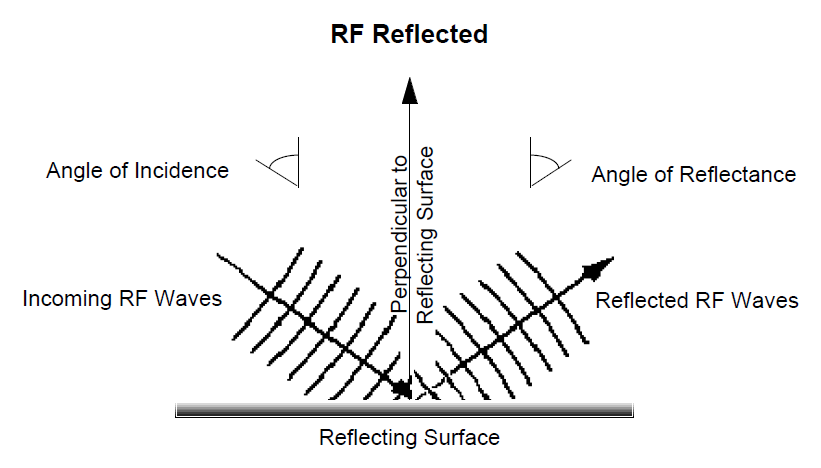
Reflection
 المؤلف:
Diane Fisher Miller
المؤلف:
Diane Fisher Miller
 المصدر:
Basics of Radio Astronomy
المصدر:
Basics of Radio Astronomy
 الجزء والصفحة:
p34
الجزء والصفحة:
p34
 28-2-2016
28-2-2016
 2744
2744
Reflection
RF radiation generally travels through space in a straight line. RF waves can be reflected by certain substances, much in the same way that light is reflected by a mirror. The angle at which a radio wave is reflected from a smooth metal surface, for example, will equal the angle at which it approached the surface. In other words, the angle of reflection of RF waves equals their angle of incidence.

This principle of RF reflection is used in antenna design to focus transmitted waves into a narrow beam and to collect and concentrate received RF signals for a receiver. If a reflector is designed with the reflecting surface shaped like a paraboloid, electromagnetic waves approaching parallel to the axis of the antenna will be reflected and will focus above the surface of the reflector at the feed horn. This arrangement is called prime focus and provides the large aperture (that is, antenna surface area) necessary to receive very weak signals.
However, a major problem with prime focus arrangements for large aperture antennas is that the equipment required at the prime focus is heavy and the supporting structure tends to sag under the weight of the equipment, thus affecting calibration. A solution is the Cassegrain focus arrangement. Cassegrain antennas add a secondary reflecting surface to “fold” the electromagnetic waves back to a prime focus near the primary reflector. The DSN’s antennas (including the GAVRT) are of this design because it accommodates large apertures and is structurally strong, allowing bulky equipment to be located nearer the structure’s center of gravity.

The reflective properties of electromagnetic waves have also been used to investigate the planets using a technique called planetary radar. With this technique, electromagnetic waves are transmitted to the planet, where they reflect off the surface of the planet and are received at one or more Earth receiving stations. Using very sophisticated signal processing techniques, the receiving stations dissect and analyze the signal in terms of time, amplitude, phase, and frequency. JPL’s application of this radar technique, called Goldstone Solar System Radar (GSSR), has been used to develop detailed images and measurements of several main belt and near-Earth asteroids.
 الاكثر قراءة في مواضيع عامة في علم الفلك
الاكثر قراءة في مواضيع عامة في علم الفلك
 اخر الاخبار
اخر الاخبار
اخبار العتبة العباسية المقدسة


